"What happy memories my
sister I have of the place. It was, in some ways, an idyllic place to
grow up, but in others less so. I was intensely shy as a child and the isolation
did nothing to improve it since our parents didn’t want us associating
with the “local children” and we lived too far away from “acceptable”
friends to see them more than rarely. But I loved it nonetheless. I loved
the house and the garden, and the orchard and the “current field”
as we called it, and the yew trees, and the river and especially the railway
line along which ran the most wonderful old trains of the old S&D (“slow
and dirty” and/or “swift and delightful” as it was affectionately
known during its life). I grew up with a passion for trains which I still
indulge in which largely derives from living in Churchland. An assortment
of photos of the S&D can be found on
this website, mostly taken by me, and many taken at Churchland Farm.
We lived there from 1949 to 1962. My sister was 4 and I was
2 (or perhaps we were 5 and 3 depending on which month it was) when we moved
there, so my earliest recollections are of Churchland. My father had just
retired from the army at the age of 48 and chose to spend his remaining active
years being independent of the rest of the world by running his own small-holding.
I guess he might have been a bit idealistic, though “escapist”
might be a more suitable description because he too was an intensely shy man
who as an adult remained awkward in company.
Churchland Farm was bought for £4200, but since my
father had little money when he retired, my grandmother
contributed £2000 by way of a loan, the condition being that she was
allowed to make it her home following her return from India. This caused a
certain amount of tension in the house since she and my father did not always
see eye to eye.
My father had been born and brought up in and around London,
so I’m not sure why he chose to retire to Somerset but I don’t
think it had much to do with the family’s historical connections with
the county. No doubt it was based on the sort of practical unemotional reasoning
that my father aspired to. He always claimed to hate sentimentality of any
sort, though I was never quite sure what he meant (or hated)! Anyway, when
my father’s mother died in 1958, she left him most of her money with
the result that he finally became financially independent. He must have bought
my grandmother’s share in the house (or perhaps he repaid her loan)
and soon afterwards she left to live with her other daughter in Birmingham.
Both my mother and grandmother were very small of stature,
but intensely active hard-working people. My dad was hard-working too but
his work was restricted to the farm and garden, whereas my mum did the farm
and garden plus the cooking, plus the housework and laundry and sewing and
knitting and mending, and the decorating (which my dad helped with) and the
bringing up of two kids (which my dad hardly helped with at all). My Gran
looked after the geese, mowed the lawns and did lots of knitting and had her
own greenhouse (at the south-west corner of the house), but largely kept out
of the way in her sitting room (adjacent to the greenhouse) or her bedroom
directly above. My mum often used to say (usually when she was gutting a chicken
and plucking its feathers) that she wasn’t brought up to do any of these
chores and had had to learn them all the hard way. She had been brought up
in India where the family had servants to do all the chores for them –
a bit like my youngest son here in China – and it amazes me when I think
how well she coped.
Anyway, the result of their hard work was a magnificent flower
garden that visitors admired, and a vegetable garden that grew almost every
veg I can think of. Plus they had chickens, geese, pigs (at one stage), fruits
of every description (apples, cherries, peaches, pears, plums, damsons, black
and red currents, gooseberries and whatever else) all of which were picked
and either sold, eaten, cooked, bottled or made into jam (of which there was
always a vast collection in the house). How inadequate I feel when I compare
my limited skills with theirs. Indeed one effect of my upbringing was a hatred
of gardening which I have never lost. I made great efforts to emulate my parents
when I lived in Australia and had a small garden of my own, but in the end
I had to accept that I didn’t have their green fingers and that I hated
it anyway!
My parents made a lot of changes to the house, firstly adding
the “spare room” into the roof on the north side above what we
called the dining room. They extended the kitchen (southwards) by knocking
down a wall into a small room that had hitherto been used as a garden shed.
And they made some alterations to the “sitting room” (on the south
side next to the kitchen) during which they discovered an old bread oven hidden
in one of the walls. I remember my sister and I hoping to find some ancient
scrolls inside it but of course there was nothing. Apart from that, I think
most of the other work they did on the house was in the way of painting and
wallpapering. My dad chose a pale pink for the outside walls, with a deep
maroon for the windows and doors – not a colour scheme that I would
choose today, but we loved it as kids.
One memorable event took place on 6th April 1953 when the
garage caught fire. My father had been using a rotary hoe and he parked it
in the garage beside the car. Something combustible must have fallen on it
and been ignited by the hot exhaust pipe because within an hour the garage
was ablaze and threatening the rest of the house because the roof of the interconnecting
outhouse was lined with straw. Firemen had to rip the tiles off to take the
straw out before the whole house went up. As the fire blazed someone discovered
that our dog was missing. We all assumed that he’d been frightened by
the fire and run away until my mother realized that she’d left him in
the car. It sounds cruel, but it wasn’t – he loved the car and
loved to sit in it, but on this occasion it was a cruel fate because he and
the car were consumed by the fire – a great loss to us all because we
loved him dearly. I’ll always remember the acrid smell of the garage
the day after and the feeling of sadness that it evoked.
I don’t think there were any other really memorable
incidents during out stay there. I remember crying my eyes out when I found
myself caged inside the middle of one of the yew trees. And I remember being
rather frightened of the old WW2 “pill box” which is no longer
there. It sat at the south-east corner of the property overlooking the railway
line, and was very dark and spooky inside. Fear was a common experience for
us kids. Going to bed at night was always a fearful experience, having to
climb the steep creaking staircase into the darkened corridor which also creaked.
Every shadow concealed a bogie-man and my sister lived in perpetual fear of
ghosts (which I cruelly exploited by making ghostly noises in the dark).
Talking of ghosts, a lady who lived there after us claimed
to be something of a psychic. Anyway, she was adamant that she saw ghosts
there, but I never did except in my imagination. It was the house that we
moved to from Churchland that seems to have had something of an evil spell
over it, but that is a story that I can relate to you another time!
I can’t remember the name of the psychic lady, but
my sister will almost certainly be able to. I think she was the only other
owner of Churchland Farm that I knew. After we left, it was taken over by
a family that turned it into rabbit farm and who let the gardens go to grass.
Shortly afterwards (in 1966) the railway closed to all but the milk trains
from Highbridge to Bason Bridge, and they eventually disappeared in the 1970s
when the M5 was built. Apparently MoT refused to countenance the cost of a
bridge over the line that would have allowed it to keep operating. Anyway,
it was a sad loss to me even though I was no longer living there, because
I loved it dearly.
Sometime in the late 1970s or perhaps early 1980s, my father
arranged with the then owner of the farm to allow us all to go back and see
it. As you can imagine it was a nostalgic experience going back to see the
place as adults. Obviously a lot had changed but much hadn’t. It was
we who had changed more, with the result that the house and the rooms seemed
so much smaller than we had remembered. I think I’ve grown out of my
nostalgia now, so I would probably be able to see it more dispassionately
now if I were to go back.
I see that I’ve never had time to write anything about
Churchland Farm on my website, so perhaps your message (and this reply) will
inspire me to do something about that. Perhaps I should simply add an edited
version of what I’ve written here because I don’t know a great
deal else about the house. All I remember is that it was supposedly 600 years
old when we lived in it, and I think the sitting room was the oldest part.
My Daphne sister has a much better memory for details than I do, so I’ll
send her a copy of this and ask her to fill in anything I’ve missed.
She will probably remember the names of some of the other owners including
the rabbit farmers.
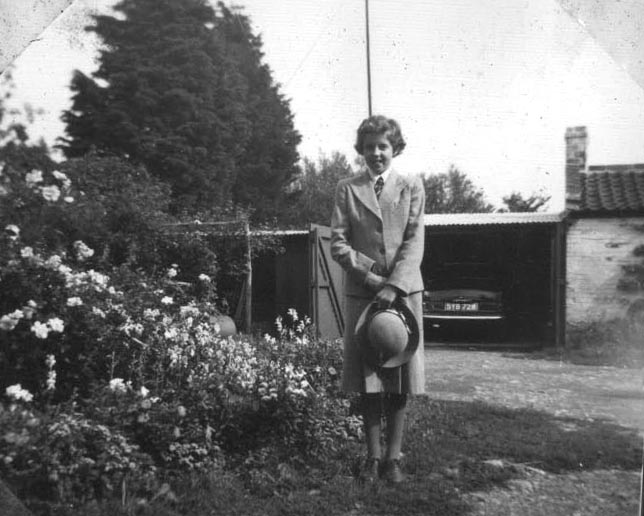
This one is of my
sister ready to go off to boarding school at the Royal School of Bath –
a place that she hated to the extent that I shared her unhappiness at the
start of every term. The photo shows the old garage in the background. The
car inside it is the 1954 Ford Consul that replaced the identical 1953 version
that burned in the fire that might have destroyed the house.
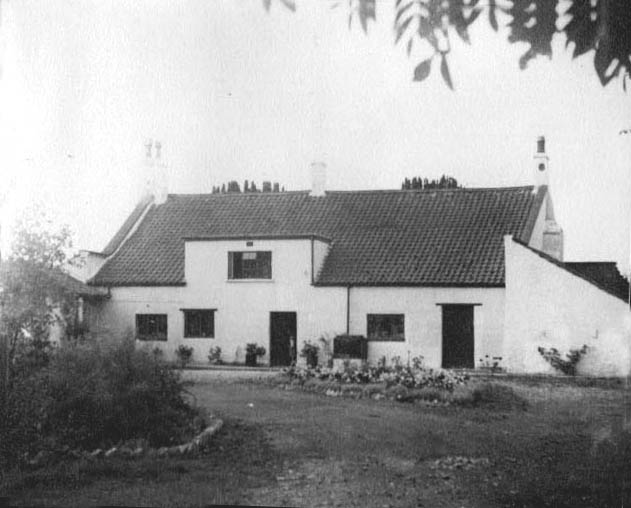
This one shows the
north side of the house (what we called the back), with the new “spare
room” built into the roof. Below it is what we called the dining room
(how low the ceiling was!) and to the right was what we called the “front-back-door”!
To the right of it is the workshop window and door, and to the right of
that, the angled roof of the tool shed. I can’t remember what was
under that roof beyond the tool shed, but presumably there must have been
another storage shed. I have happy memories of sharing Mr Burfett’s
sandwiches in there as they always tasted so good. (He helped my parents
do the garden and his daughter, Mrs Pugsley, both from East Huntspill) helped
with the housework). The old garage is just off to the left of the photo.
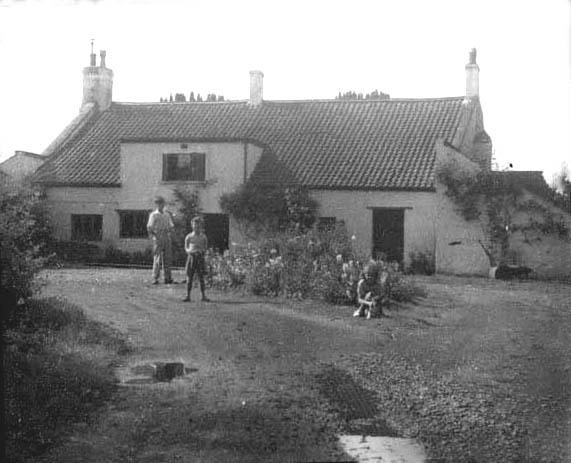
This one shows the
same view, but shrubs that were new in 1951 have grown substantially.
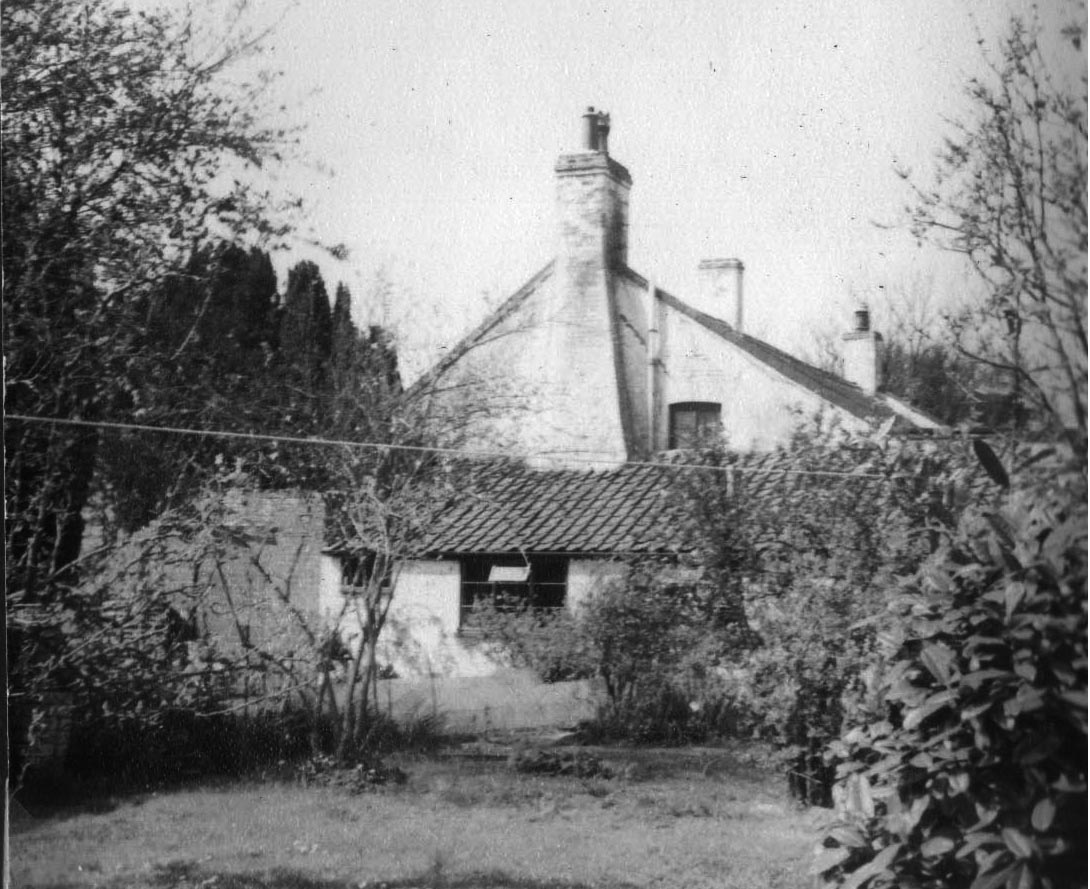
This one shows the kitchen including the extension my parents made (the
little window to the left). Above it is the bathroom (presumably still there).
To the left is the old cherry tree and further to the left (outside the
picture) was the pill-box. In the front garden beyond the wall are the yew
trees. The vegetable beds were all on this side of the house.
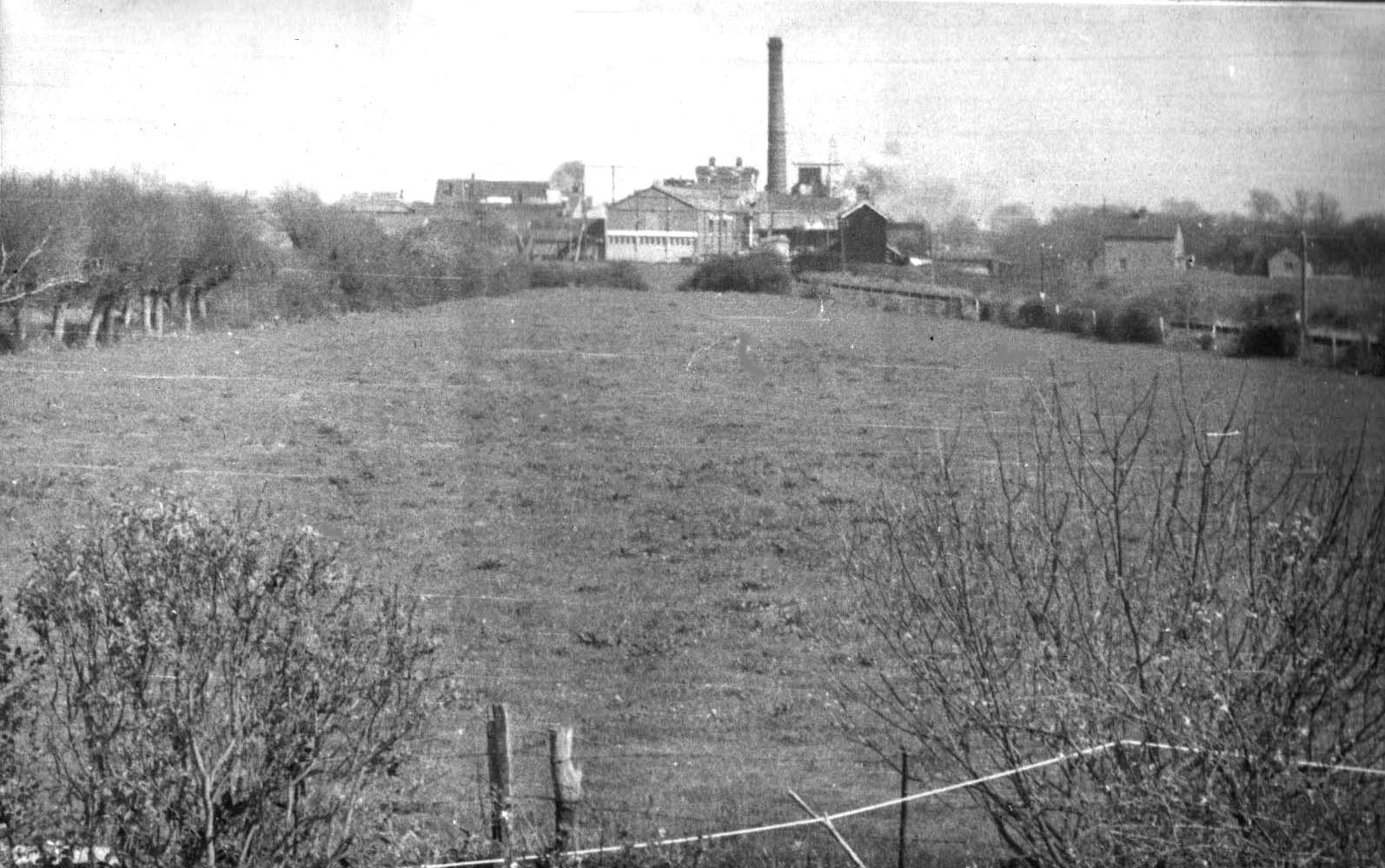
This one shows the view out of the bathroom
window (or perhaps I was on the roof) towards the east with the Bason Bridge
milk factory in the background and the railway on the right (and the river
beyond it).
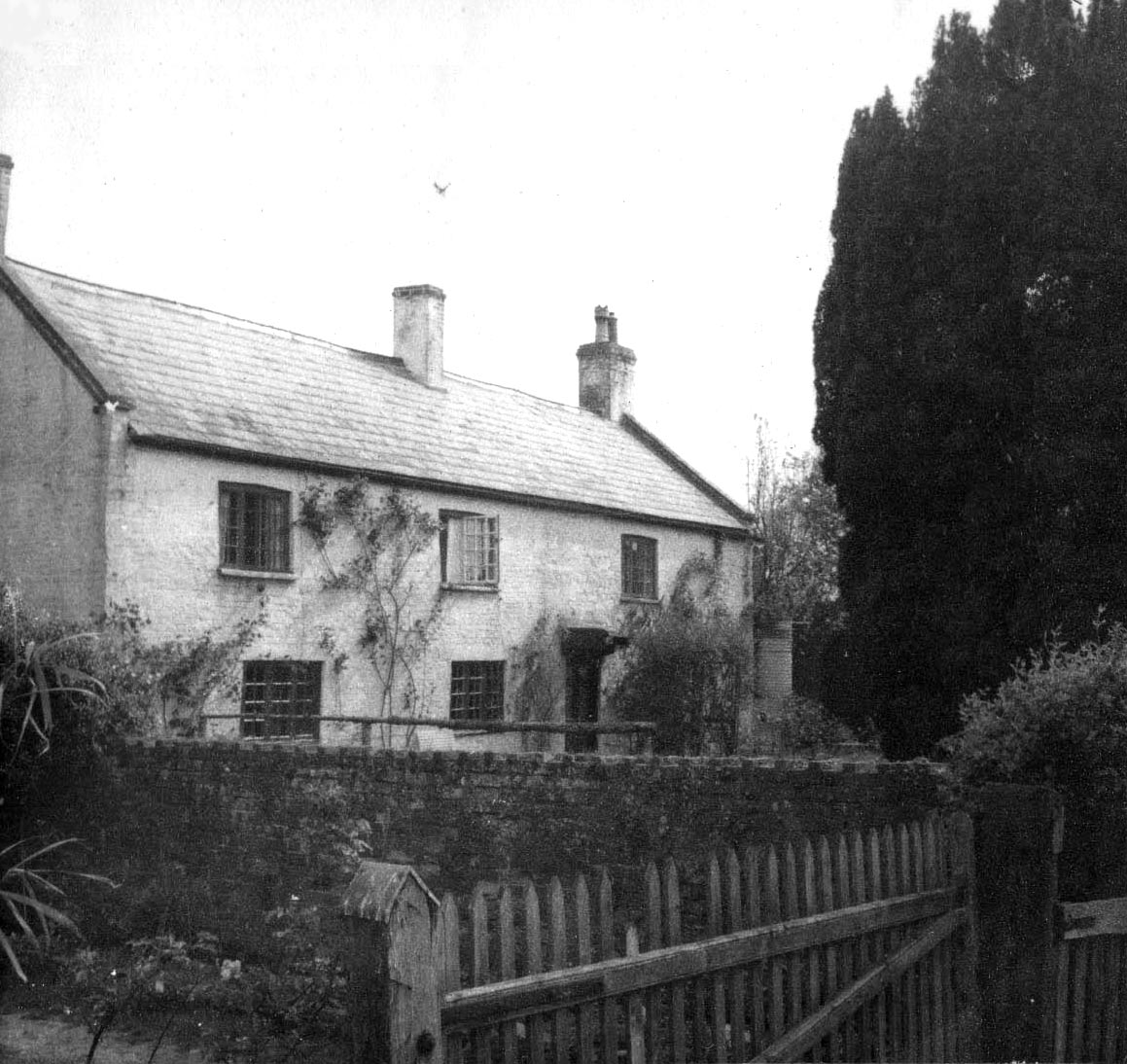
This one shows the south side of the house
which we called the front. Left upstairs was my grandmother’s room.
Next to it was my sister’s room and next to that (with shared window
frame) was mine. Beyond was my parent’s room. Below left was my grandmother’s
sitting room (with conservatory out of picture on the left). Next to it
was the sewing room (where we had a TV set), then the front door, and beyond
that, hidden by roses, the sitting room. A rain water tank in the far corner
collected water from the roof. The main flower garden was beyond the wall.
The gate in the foreground led from the lane down the side of the house
into the “current field” so called because my father grew black
currents in it. The battery-hen house and pig sty were at the side of the
field, and three were also free-range chickens in the field. The geese had
free-reign of the property and rather frightened me. I’ll never forget
being attacked by the gander who flew at me as I walked through that gate
holding one of his goslings!
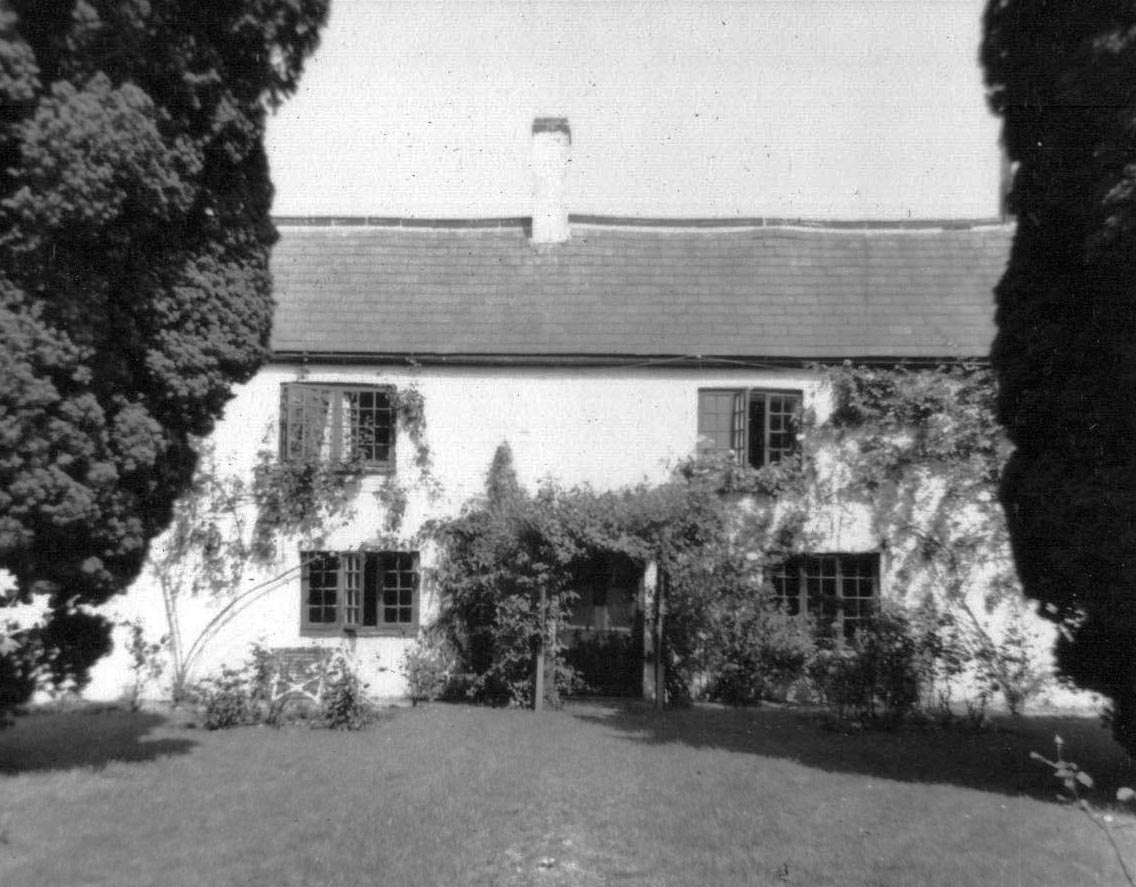
This one shows the
south face of the house. There was originally a gravel path from the front
door out to the unlocked metal gate that gave access to the railway line
(no “safety police” in those days!), but my parents grassed
it over just before this photo was taken. Roses climbed the wall of the
house and honeysuckle draped over the wooden frame outside the door. I remember
quite often climbing up the other side and sitting on the apex of the roof.
No-one seemed to worry unduly.
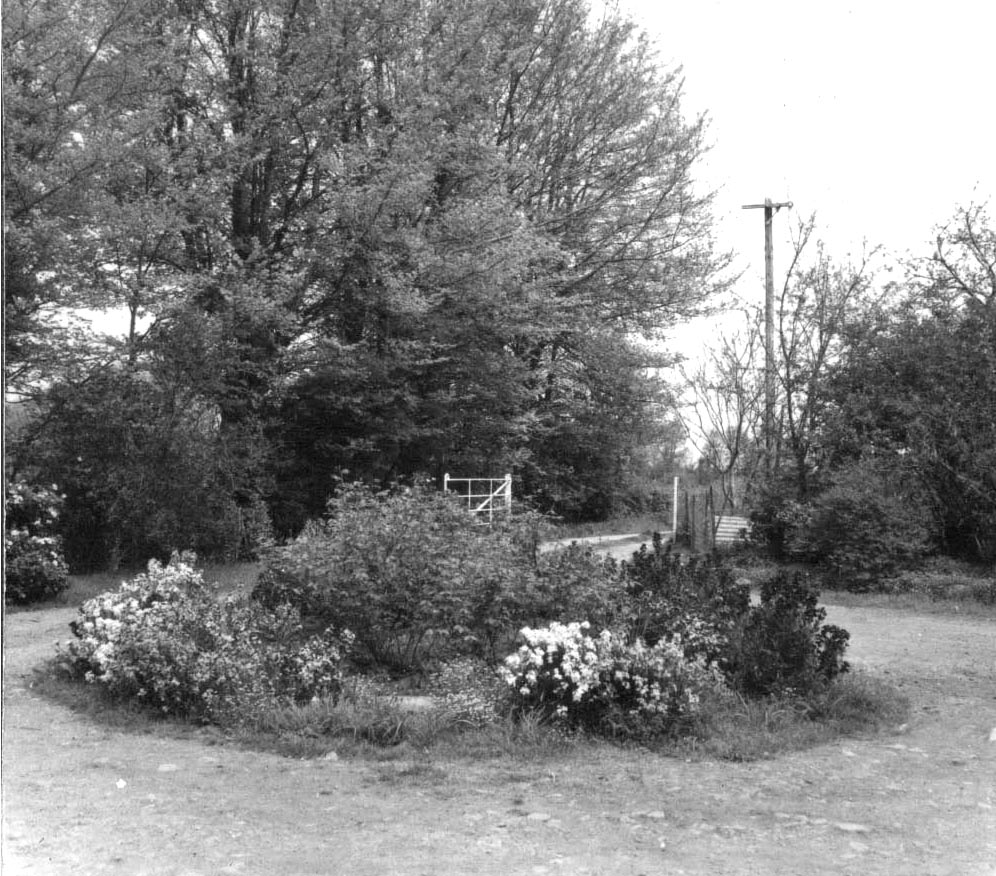
This one shows the north side of the house
which is probably much as it is today, though perhaps the rose garden has
now gone. To the right of the gate was the orchard which belonged to the
property and which contained one or two trees that grew “coxes orange
pippin” apples which I’ve never tasted the like of since. The
old garage is also off to the right of the photo.
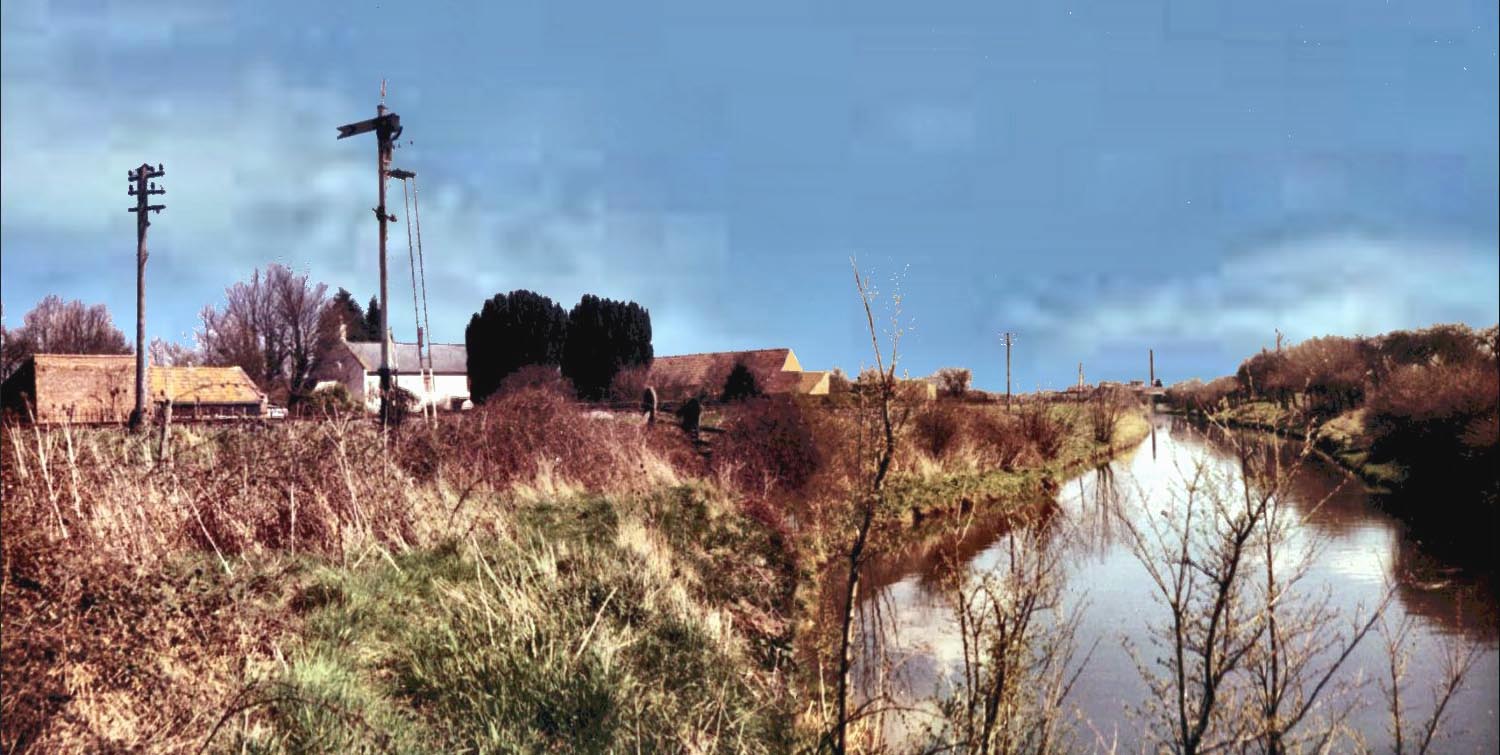
This is the only colour photo that I have
of the house, taken from the river. The river frontage (up to the style,
I think) was part of the Churchland property at that time. In the early
days my father grew potatoes on it but for some reason he gave up. Perhaps
it was not productive enough, or perhaps it was just too much extra work.
He also had a pipe installed under the railway line which cantilevered out
over the river and dropped into the water which he used to pump water for
irrigating his gardens. He had to get special permission to do it. I also
used to fish there occasionally. The river seems narrower today than it
looks in this picture.
I used to spend hours on the railway line,
picking up stones from the ballast and throwing them into the river trying
to hit timber wedges that I’d picked up from the railway track. Only
once was I nearly run over, and that was one day when walking home from
the bus-stop with the family. A high wind was blowing which stopped me from
hearing the train that was approaching as I walked along the track, and
stopped me hearing the screams from my family who watched in terror expecting
to see me disappear under the engine. Anyway, I survived.
I guess people were much less paranoid about safety in
those days. My sister and I used to walk down the line on our own to catch
the bus to school (on our own) from the age of (I guess) 5 or 6. And once
I got a bike of my own, I used to take off and disappear into the moors
or off to see friends or (more often) to go train-spotting on the main line,
without anyone thinking about the risks. In fact, one of the things that
I like about living in China is that people here are not as paranoid about
risk (or litigation) as they have become in the West. I guess I’m
like my dad – I prefer to do my own thing and to be as independent
as possible!
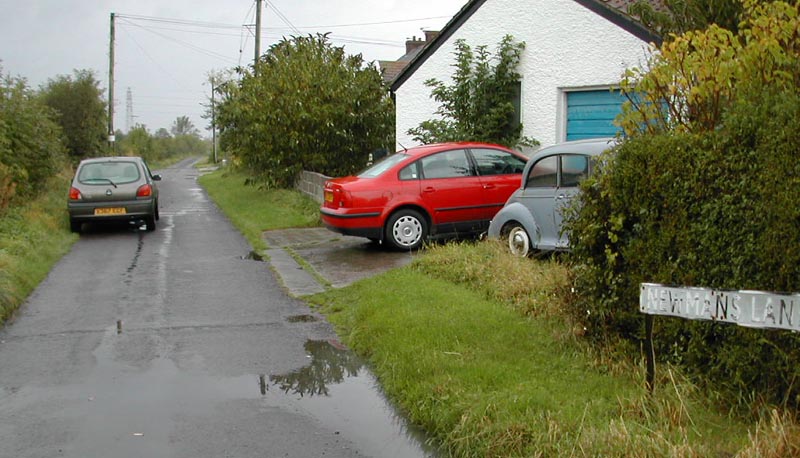
Last time I drove by, I saw that the old “Newman’s
Lane” sign was still at the end of the “white lane”. We
called the gravel lane the “black lane” and the bitumen one
the “white lane” because it was sealed with white stone chippings.
Funnily enough the name Newman’s Lane had nothing to do with our living
there – it was just a coincidence. But the sign was installed when
we were living there.
The location of Churchland Farm is shown
on the "active" Google Map below:









